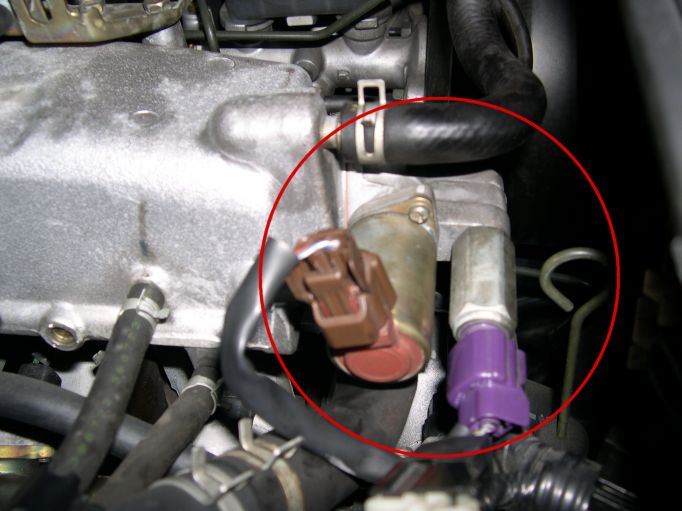WHAT DOES IT DO?
The AAC valve assists in the idling
RPM of the vehicle by controlling
air bled into the plenum.
HOW DOES IT WORK?
The AAC valve consists of a control
solenoid whose shaft pushes against
an opposing spring loaded tapered
spool. The movement of the spool
allows an air bleed hole to be proportionally
exposed which allows extra air thereby
increasing the RPM. The solenoid
is driven by a pulse width modulated
(PWM) control signal from the engine
control unit (ECU) at approximately
160Hz. The duty cycle of the PWM
signal is varied such that an increase
in duty cycle results in an increase
in air bleed. If the air conditioner
or power steering is activated,
the AAC valves duty cycle is increased
to increase the RPM which counteracts
the additional engine load.
WHAT ARE THE SYMPTOMS FOR WEAR
OR FAILURE?
A faulty AAC valve can generate
some of the following symptoms:
- Unstable idle RPMs
- Unable to set RPM's at idle
- Stalling on idle
- Hesitation on acceleration from
idle.
HOW IS IT MAINTAINED?
The AAC valve can be disassembled
and cleaned. Also the spring within
the AAC assembly can wear with time
and could require replacement.
The AAC valve can also be reconditioned
as per the instructions listed here.
HOW CAN IT BE TESTED?
(Courtesy of Phantom)
It is rather difficult to come
up with an easy, no-special-tools
means of testing this thing, i.e
CRO and pulse generator. That leaves
physical removal the only easy option.
Even then, the only real way I can
think of to do any form of test
is to blow in it and see if it leaks
substantially in the closed as relative
to open position. Whilst my target
in the recon was to try to eliminate
leakage completely, I have no basis
for comparison to a new or operational
valve...I was simply going on what
I thought would be needed to fix
it, however I did get an excellent
result so I must have been close.
In addition leakage is not the only
concern, so is the spring tension
status. A good spool seal may still
lead to poor operation because of
this. A good way to see what's going
on is to pull it off, block everything
temporarily, and visually observe
the spool moving under ECU control.
With the variation in signal presented,
you can quickly gauge if the spring
is adequate if for example the spool
doesn't reach the taper or is already
too far on the taper at these presented
signals. This is indeed a difficult
one, hence the plethora of such
problems I guess. Perhaps only a
very keen enthusiast would be willing
to do this. At the end of the day
all we can do is provide all the
information needed and let the individual
decide what they can/want to do..
WHERE IS IT LOCATED?
On the end of the plenum closest
to the firewall.
 |
What
does it look like?
- R33 Series II RB25DET AAC |
 |
| |
 |
|
 |
|
 |
WHAT IS THE PART NUMBER
AND COST?
R33 Series II RB25DET AAC
- Nissan part number ???
- Cost AU$650+??
|

